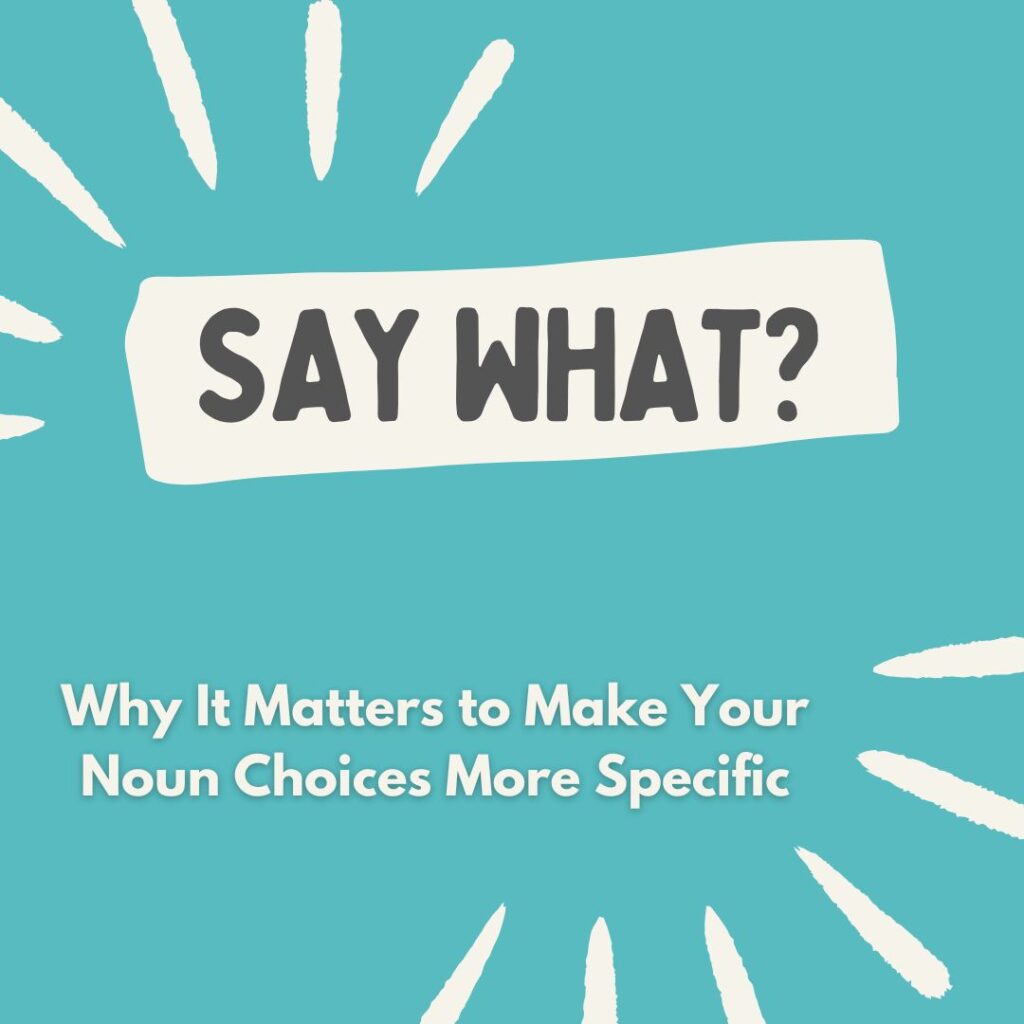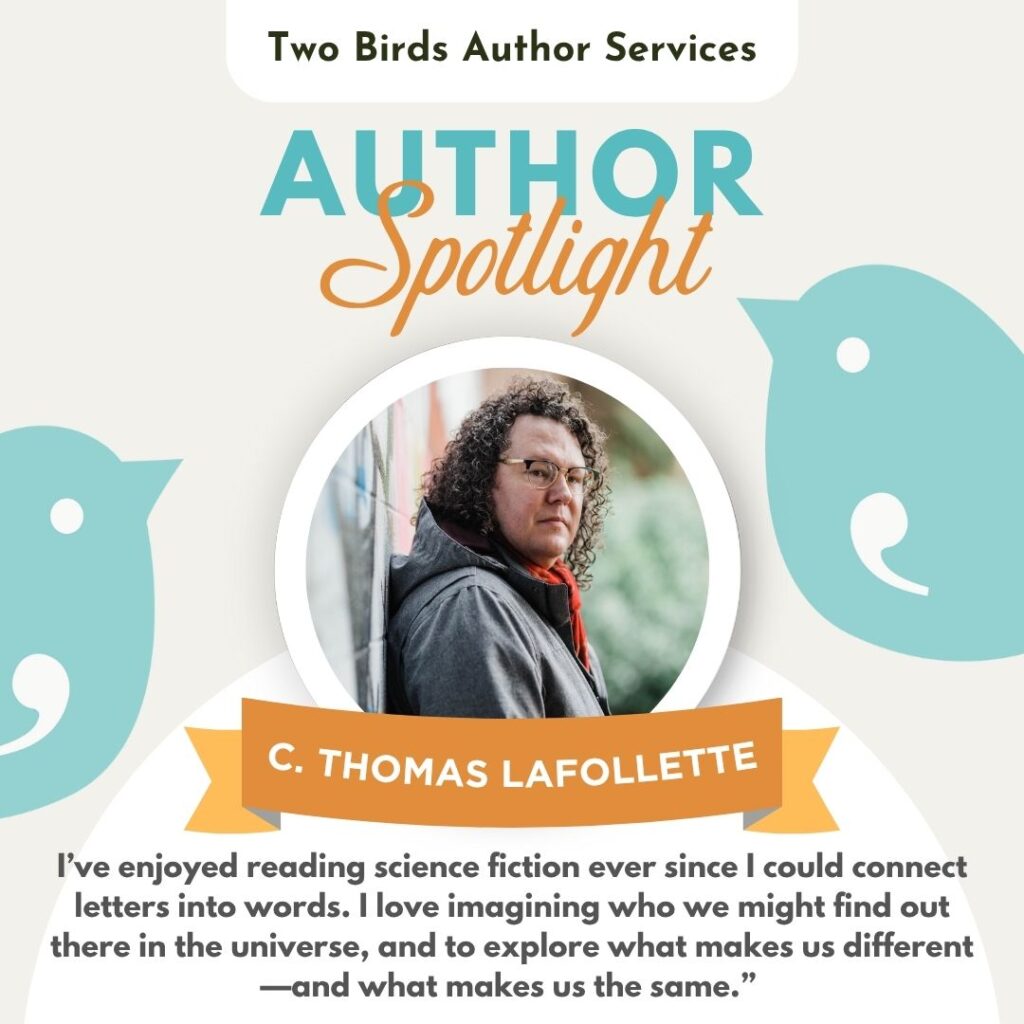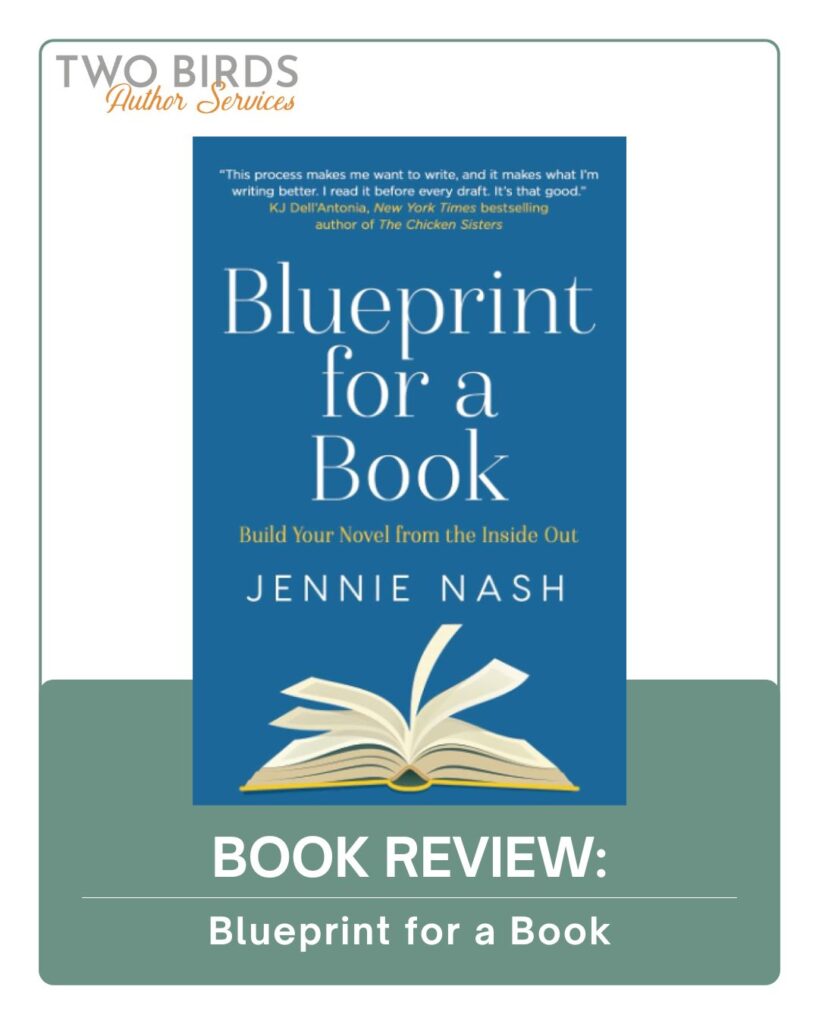This is what I wanted to pick up. Those are my favorites. That is where I’ll be…
Do you even know what we’re talking about in the above sentences? Of course not. How could you?
With some vague pronouns sprinkled into those sentences, no specific nouns to anchor you, and a lack of context to ground you, there’s no way you could know the meaning of This, Those, That as we’re using them above. It’s unfair to expect you, dear reader, to understand what the context is unless we choose our words more carefully. That’s fair, isn’t it? We want you as readers to know exactly what we mean—especially if we want you to keep reading.
Words are your business
As an author writing and selling your books, you want to do the same. You want your readers to stay invested. One way to keep them turning pages is to choose your words carefully for maximum impact. And that means we have to talk about something you probably didn’t enjoy discussing in English classes, but we still have to address this topic because it matters…
Yes, we’re talking here about pronouns—and more specifically, pronoun usage that is clear and effective, as well as replacing pronouns with living, breathing, powerful nouns when those nouns will make your writing better than vague pronouns will.
This, that, and those are words that come in handy…in small doses, and in the right circumstances. When overused or used incorrectly, these words weaken your writing and make it hard for readers to understand what you mean.
We get it. Grammar. Yuck. But as an author, it’s important to understand how you can make your sentences stronger, more inviting, more stylistically appealing, and more precise. This simple approach to revising your sentences can do so much to make your storytelling more effective.
Remember—effective stories sell more books. So, mastering pronouns and nouns is a skill-set to develop and use, business-wise.
How common is the onslaught of vague pronouns?
One of the most common issues we see as editors working on early-stage manuscripts is a lack of specificity in word choices. It’s understandable why this occurs, and honestly a natural part of the writing process—after all, authors are drafting to get their big ideas on the page. They’re thick into imagining the broad strokes, the heart-pounding moments, the dramatic emotions that suck readers into the story.
Those big-vision ideas and thrilling events are the things that make writers want to sit down and write. They’re exciting to write about.
But…those scenes are still big-picture brush strokes in those early stages, and they need refining. What you as a writer are envisioning in your head may not have made it onto the page, and it’s your job to fix that. Figuring out those fixes is a challenge, but one easy way to do so is to pay attention to your pronouns…and manage them consciously.
How to fix these problem pronouns?
Now, it’s fair to start off by pointing out the obvious. Not all pronouns are bad. Sometimes, you need those suckers to create variety. You don’t want to repeat the same noun five sentences in a row, and pronouns help. But only if the use is clear. Let’s talk about some practical fixes you can make on your own, before submitting your manuscript to us for editing.
Let’s look at an example to help us break down solutions you can easily use at home anytime. (Note: This is a hypothetical example, not taken from any specific author’s manuscript.)
Example for editing:
-
The boy stood next to the boxes, pawing through them to draw out expensive merchandise that could be resold at pawn shops or on Marketplace with ease, even if they were stolen.
-
At the sound of footsteps, he looked toward the door and saw me. As our eyes met, I sucked in a breath. God, he was so young. What was it with young kids like this getting into gangs and getting into trouble?
-
I knew that he would recognize me, and I knew that he’d mention my name to that other guy—what was his name? Alex? And that would cause me problems that I didn’t need.
Problem #1: Missing Context
Context that didn’t make it into the scene is the biggest concern you need to deal with when revising, so let’s tackle it first. Sometimes, when you’re drafting a scene, you’ve got all the big-picture action in your head—but it doesn’t all make it onto the page. And since readers aren’t living in your head, they get confused.
Vague pronouns in this case tend to act as placeholders for the backstory that you as an author know well—but no one else knows it.
Example of the problem in action:
- At the sound of footsteps, he looked toward the door and saw me. As our eyes met, I sucked in a breath. God, he was so young. What was it with young kids like this getting into gangs and getting into trouble?
The solution: adding context and getting clearer!
You see, what’s missing here is some information on what the writer means by the phrase, like this. Let’s face it—that phrase could imply something I don’t actually mean, like color of skin or ethnicity or socioeconomic status. And it isn’t specific enough to prevent misinterpretation.
Suggested fix:
- At the sound of footsteps, he looked toward the door and saw me. As our eyes met, I sucked in a breath. God, he was so young. What was it with young kids from my school getting into gangs and getting into trouble?
Now we understand some things we didn’t before! This protagonist is from a specific school, and it seems like several other kids in that school are getting into trouble. This new wording not only avoids misinterpretation—it also hints at a possible motivation for the protagonist’s involvement. Maybe he wants to help a friend from school, or maybe a sibling, avoid these gangs. Maybe he wants to make his school a better place. Either way, the story is a lot more interesting now, just with a bit more context provided!
Problem #2: Unclear Pronoun Use
When we chat with other people, we tend to use pronouns a lot. In fact, we tend to overuse them. But in person, this overuse doesn’t matter as much, because we can always clarify meaning as we talk. People can ask: “What do you mean?” And you can answer.
In writing, we don’t have that luxury. Instead, we have to anticipate those questions and preemptively answer them with specifics.
Example of the problem in action:
- The boy stood next to the boxes, pawing through them to draw out expensive merchandise that could be resold at pawn shops or on Marketplace with ease, even if they were stolen.
The solution: specific noun insertion
The use of they in the sentence above is unclear because the nearest noun it can refer to is pawn shops (which is not what is meant). And the word merchandise (which is what is meant) isn’t plural. That’s a simple fix. Just turn the pronoun into a more specific noun phrase.
Suggested fix:
- The boy stood next to the boxes, pawing through them to draw out expensive merchandise that could be resold at pawn shops or on Marketplace with ease, even if those items were stolen.
Notice it doesn’t have to be the most brilliant phrase ever written. We’re not trying to win an award with that wording. We’re just trying to ensure it’s clear to the reader. Simple is totally fine, as long as it’s specific.
Problem #3: Unnecessary Wordiness
The word that can be used in several ways—to connect dependent clauses, to provide links in sentences, to substitute for specific nouns. As a result, that gets overused a lot. In the sample below, just look at how many times it’s used in just two lines:
Example of the problem in action:
- I knew that he would recognize me, and I knew that he’d mention my name to that other guy—what was his name? Alex? And that would cause me problems that I didn’t need.
The solution: editing out filter pronouns
In this case, the solution means looking for places when that can be deleted entirely, without losing any meaning or smoothness of style. Just like other filter words (very, really, like…), you can do a search through your manuscript and delete that wherever possible.
Suggested fix:
- I knew he would recognize me, and I knew he’d mention my name to the other guy—what was his name? Alex? And that would cause me problems I didn’t need.
Notice how many uses of that can simply be cut! The sentences read fine, even better actually, with these deletions made. I’ve left in the final use of that—because from context, it could work. But if you want to get even more specific to add more tension, specificity could help here too:
- I knew he would recognize me, and I knew he’d mention my name to the other guy—what was his name? Alex? And getting fingered as a narc would cause me problems I didn’t need.
Whoa! This protagonist is a narc, and he’s dealing with a criminal gang. He doesn’t want to get caught, but he might get in trouble in just a few seconds. Now we’re talking about drama that can keep readers invested!
Making edits is always worthwhile
No author can ever write a perfect book, especially not without a second set of eyes to catch those things that you might miss—like missing context, vague wording, or repetition. Critique partners and editors are helpful at noticing issues like too much this, that, those…so you can fix them. We’re here to help you anytime as you level up your manuscript.
Have questions about the editing process? We’d love to chat with you and help you figure out your next steps. Contact us to set up a free sample edit.
Sign up to receive our Substack newsletter to get the latest updates and posts delivered straight to your Inbox.



